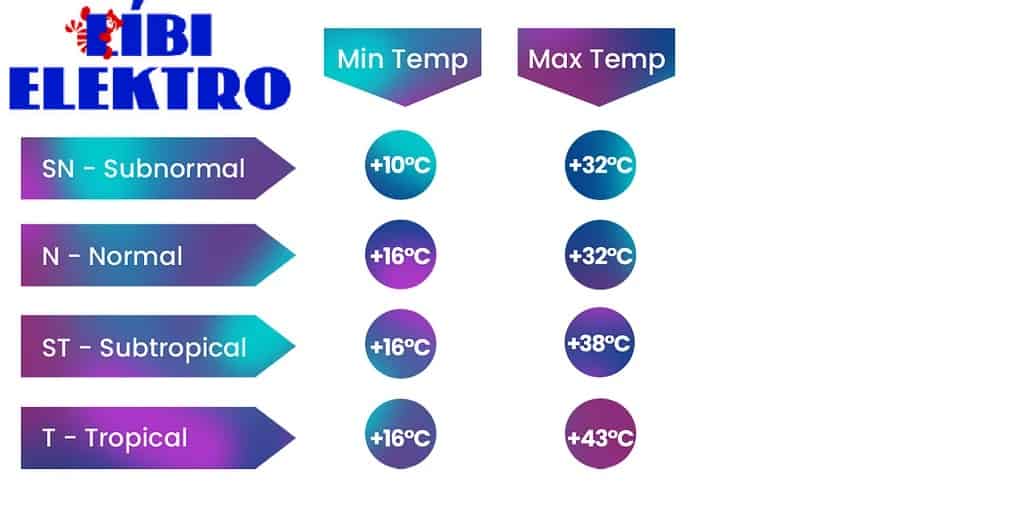What is climate class and why is it important to me?
All refrigerators and freezers are marked with a climate class. You can find this on every production label.
- SN: +10 – +32 °C
- N: +16 – +32 °C
- WED: +18 – +38 °C
- T: +18 – +43 °C
It is the temperature range in which the manufacturer guarantees the correct functionality of the product. Sometimes it is also a different combination of letters, such as N-ST, which means that the appliance should be placed in an environment where the ambient temperature does not fall below +16°C and does not exceed 38°C.
As an example, we will give an extreme deviation from the climate class:
A combined refrigerator with the ST label and an internal cooling temperature set at 8°C will be in an environment where the ambient temperature is 6°C. The thermostat sensor touches the body of the refrigerator, which will be cold. The body temperature of the refrigerator will be lower than the temperature at which the thermostat signals the compressor to start and start cooling. It's not such a problem in the fridge, but what about the freezer? The thermostat sensors are located in the part of the duct that "is cold" and thus has no reason to start cooling again. But the temperature in the freezer starts to rise slowly and the food can spoil. If, on the other hand, the same refrigerator is exposed to temperatures above 38°C, the opposite problem will occur, the refrigerator will start to freeze.

